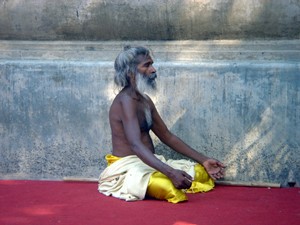
Meaning Of Pranayama
We have seen in one of the previous articles as to what is Pranayama. The meaning of Prana and Pranayama is much wider and deeper that we expect it to be. However, what it means at a mundane level is to control, regulate and manage your breath or breathing patterns. This process helps to control and calm the mind and a calmer mind in turn assists in regulating breathing. So a pattern is set up when we regularly practice pranayama.
Benefits of Pranayama
Pranayama has many benefits at the physiological levels and psychological levels. It improves functioning of all major internal organs. It aids the rhythmic expansion of the lungs and greatly improves oxygen intake. The circulatory systems improve greatly. In addition, it helps eliminate many diseases and also makes the immune system very strong.
Pranayama helps quieten the mind and senses. This assists in reduction of desires and brings a feeling of bliss. It helps drive away fear from the mind and improves the functioning of the brain in all respects. The list is practically endless of the benefits of pranayama. This is the reason why it has become very popular these days.
Types Of Pranayama
There are many types and methods of pranayama. Most of these are to be practiced only under supervision and that too after one has practiced asanas for at least a year or so. This is because, breathing is a subtle but a high impact process. A lot of damage can occur to the mind and body if done incorrectly. Most of the pranayamas are advanced in nature but many have been simplified by gurus and acknowledged Yogis like Madhavdasji, Shri Yogendra, Swami Kuvalyananda, Swami Sivananda, Shri Krishnamacharya, Shri Iyengar and many others.
There are four main types of pranayama. These are:
- Puraka; inhalation
- Kumbhaka; retention after inhalation
- Rechaka; exhalation &
- Shunyaka; suspension after exhalation
There are guidelines around each of these and one should prepare properly before commencing any of these.
Preparing Your Self For Pranayama
If you have no background of asanas or pranayama or have not been practicing for a while, there are three pranayamas or breathing techniques which are very beneficial for everyone. These have no side effects at all and can be done everyone. We have forgotten how to breathe properly over the years. We breathe normally and correctly till the time we are children. Once we hit puberty, we start breathing incorrectly. We need to train the body to breathe correctly. This itself brings us great benefits. The key is to practice on a daily basis.
Abdominal Breathing
This is a type of breathing technique which isolates the diaphragm and only makes use of abdominal muscles. Initially, one may find this exhausting but when the diaphragm starts functioning correctly, you will breathe like a baby.
Intercostal Breathing
In this type of breathing we do not move the diaphragm and shoulders at all. We only make use of the chest cavity and intercostal muscles to breathe. We do this by expanding the muscles sideways and not outwards or upwards. The following video explains this.
Clavicular Breathing
The clavicular muscles are the most under utilized muscles for breathing. These are really tiny and have to be trained well to function when required. When great amounts of oxygen is required, these muscles come into play. The video below demonstrates this technique.
All of these techniques have been developed by Shri Yogendra, the founder of the Yoga Institute, Santacruz. Practice ten rounds of each, twice a day, seven days a week for a few months and you will feel the difference in your life. For more online yoga classes and practices, do remember to visit wellzee.








